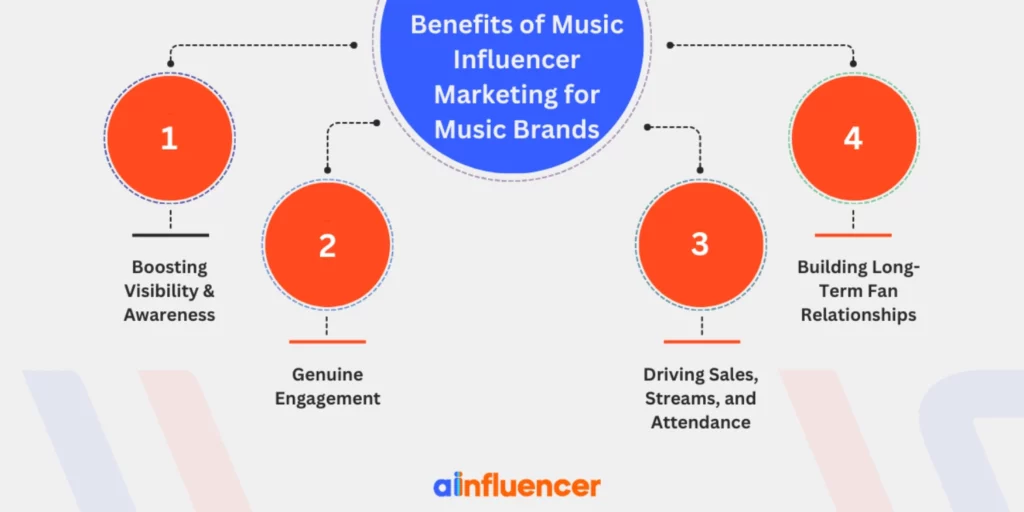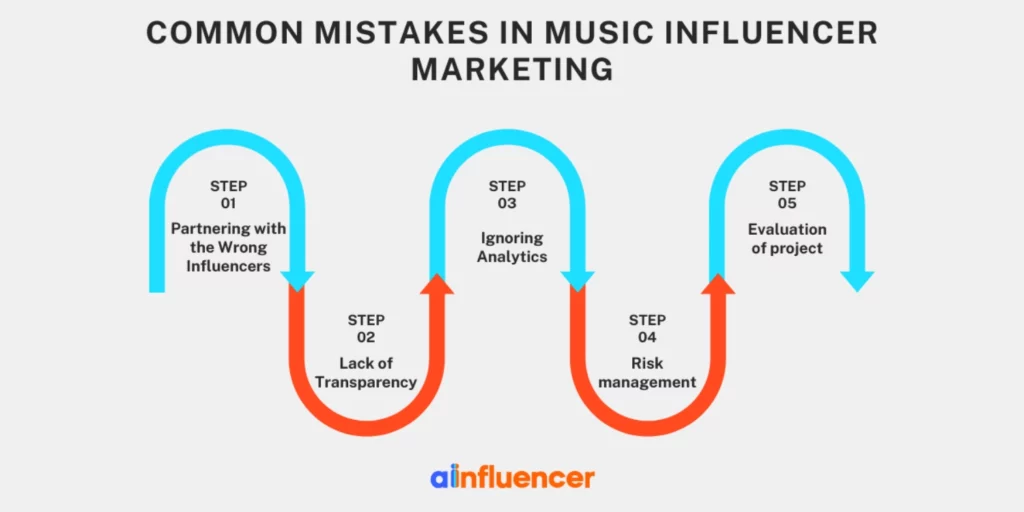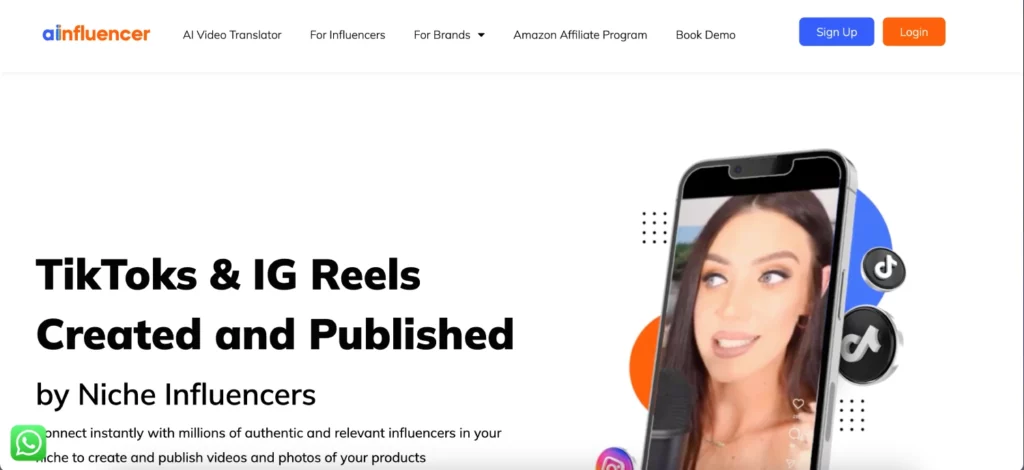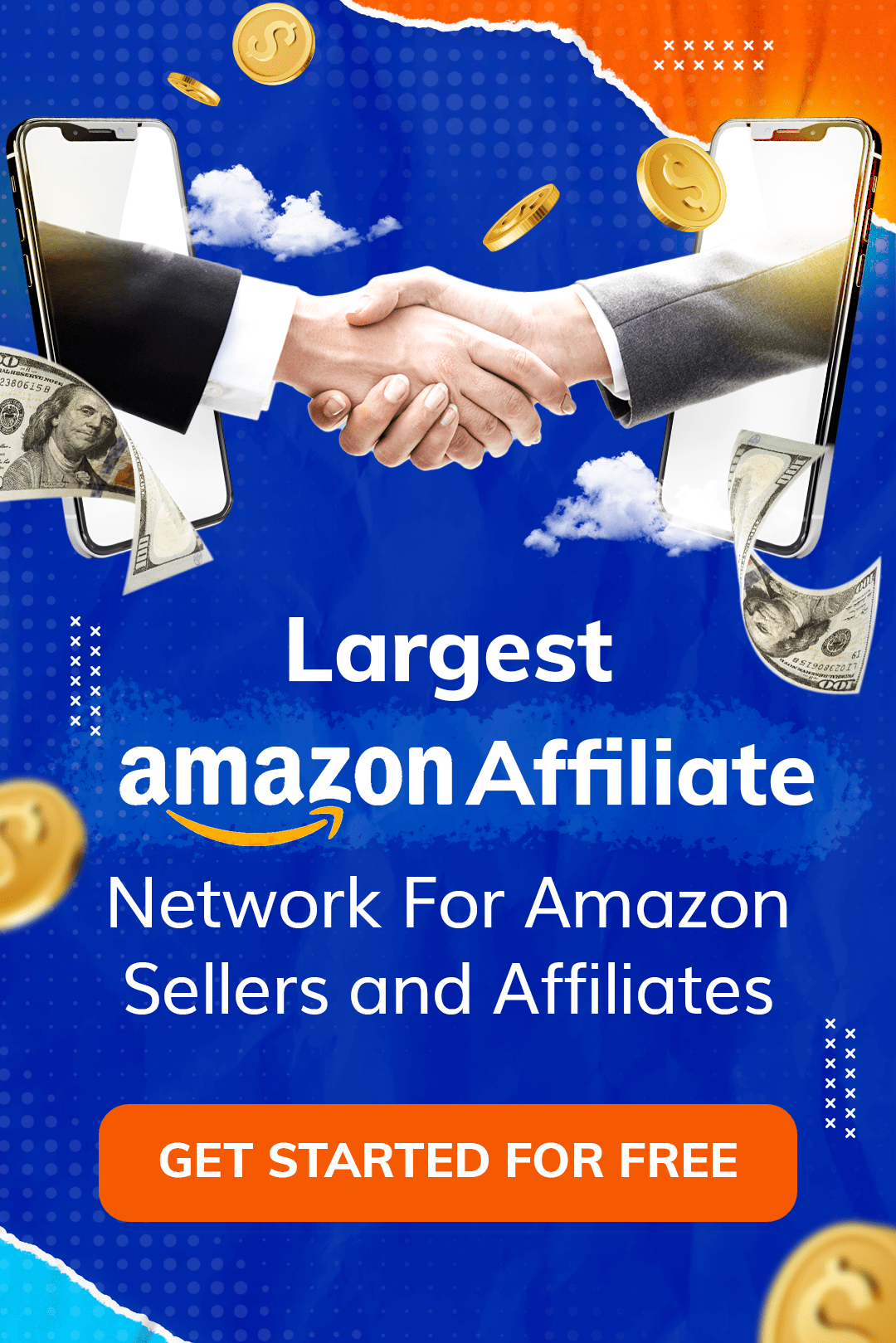Music influencer marketing is now one of the most effective ways for artists, labels, venues, and merch brands to reach fans. Instead of relying on traditional ads, brands team up with social media creators who promote songs, albums, events, or products through authentic content like TikTok dances, music reviews, and behind-the-scenes videos.
Music influencers now play an important role in launching viral hits. Platforms like TikTok have become hotspots for music discovery, where just one trending video can turn a song into a masterpiece. Behind these viral moments, record labels and marketers often use an influencer marketing platform to connect with creators who can drive streams, shares, and downloads.
As influencer marketing budgets grow, it’s clear that music is not just part of the trend — it’s leading it. Let’s dive into everything you need to know about music influencer marketing and answer all your questions.
What Is Music Influencer Marketing?
Music influencer marketing is all about teaming up with social media creators to promote music-related content. It’s a specialized form of influencer marketing, but with a focus on the music industry.
Instead of promoting general products, campaigns spotlight songs, albums, concerts, or music merchandise. For example, an influencer might do a guitar tutorial featuring a new track, start a dance challenge for a single, or review headphones while highlighting a favorite artist.
This approach mixes creativity with strategy, allowing influencers to integrate music into their posts, whether it’s through reviews, challenges, or original compositions. Music influencers can range from musicians and DJs to dancers and music bloggers. They may have millions of followers like top celebrities or a smaller, more dedicated audience like niche creators who specialize in specific music genres.
Interestingly, micro-influencers – those with 10K–100K followers – often achieve higher engagement rates, making them highly valuable for targeted campaigns. They often create tighter connections with their communities, sparking more passion and conversation than bigger influencers.
Benefits of Music Influencer Marketing for Music Brands
Music influencer marketing provides several key benefits for music brands and artists, offering opportunities to boost visibility, engage with fans authentically, and drive impactful results. Here’s a closer look at its advantages:

1. Boosting Visibility & Awareness
Working with influencers gives music brands and artists the chance to be seen by a larger, yet highly targeted audience.
Fans trust the influencers they follow, so a shout-out can quickly turn into buzz. Research shows that 84% of brands believe influencer marketing is key to reaching the right audience. For the music world, viral influencer marketing campaigns can draw massive attention.
For example, Adidas saw a 20% boost in engagement when they launched a music-themed sneaker line with influencer help. This increased visibility often translates into more followers, streams, and media coverage for artists.
2. Genuine Engagement
What sets influencer content apart from traditional ads is its authenticity. Fans often see influencers as relatable friends or trusted role models, so when they recommend a song or artist, it feels more like a personal tip than a sales pitch.
Studies show that 69% of people trust recommendations from influencers they follow, which leads to stronger engagement, such as comments, likes, and shares. This type of interaction helps music brands build a loyal community.
Additionally, influencer-generated content typically performs better than traditional ads, with 36% of marketers reporting that influencer-created content outshines branded ads.
3. Driving Sales, Streams, and Attendance
Influencers can have a direct impact on fan behavior. A simple mention or trend can boost streams, merchandise sales, or ticket purchases.
For example, 63% of consumers say they’re more likely to purchase a product if an influencer recommends it. When it comes to music, TikTok users exposed to new songs are 68% more likely to pay for a streaming service, and they spend 46% more on music each month.
Influencers help target the most active and engaged music listeners, driving measurable results in sales and stream counts.
4. Building Long-Term Fan Relationships
One of the biggest perks of music influencer marketing is its ability to foster long-lasting connections. Unlike a one-time ad, influencer partnerships can keep the conversation going.
Collaborating with influencers who genuinely love your music helps create a sense of community. These partnerships often go beyond single campaigns, continuing to engage fans as they follow the artist’s journey.
Over time, loyal fans will advocate for your music, sharing your content organically. This kind of ongoing relationship-building is priceless for sustained success in the competitive music industry.
With the power of music influencers, brands and artists can create deeper connections with their audience, driving real results and building a lasting presence in the music world.
How to Run a Successful Music Influencer Marketing Campaign
If you’re planning to launch a music influencer marketing campaign, here’s a simple, step-by-step guide to help you do it right — and get the results you’re aiming for!

1. Create Content That Fits Each Platform
Each platform has its own vibe, so it’s important to tailor your content accordingly:
- TikTok and Instagram Reels are all about short, fun videos. Think dance challenges, catchy lyric snippets, or fun trends using your music.
- Instagram Stories are great for sneak peeks, polls (like “Guess the Song Title!”), or quick behind-the-scenes clips.
- YouTube works better for longer content. You could have influencers post full cover performances, “reaction” videos to your track, or even a mini-documentary about your music journey.
- Other ideas include live stream collabs, podcast guest spots, giveaways (like concert ticket contests!), and user-generated content campaigns where fans show their love for your song.
Tip: Keep your content varied but stay true to your brand. Authenticity always wins fans’ hearts!
2. Pick the Right Platforms to Focus On
Choosing the right platform is key to reaching the people who’ll love your music most:
- TikTok is massive for music discovery — many Billboard hits started there!
- Instagram is perfect for visuals and short videos that grab attention fast.
- YouTube is ideal for building a loyal audience through longer, more in-depth content.
- Facebook and Twitter can help amplify your message to even more fans.
- Emerging platforms like Snapchat or Twitch are great too, especially if your audience hangs out there.
Quick note: Always focus on where your target listeners spend their time. It’s not about being everywhere — it’s about being where it counts.
3. Track the Right Metrics
To know if your campaign is working, keep an eye on a few important numbers:
- Engagement: Look at likes, comments, shares, and engagement rates (fun fact: micro-influencers often get higher engagement!).
- Reach & Impressions: See how many people actually viewed your content.
- Audience Growth: Track how many new followers, subscribers, or fans you gained.
- Website/Streaming Traffic: Use special links or codes to see how many people clicked through to your music or store.
- Streaming/Sales Results: Monitor the actual impact—streams, downloads, or merch sales connected to the campaign.
- Cost Metrics: Check cost-per-engagement or cost-per-view to make sure you’re spending smartly.
Tip: Even if one influencer doesn’t bring in huge numbers, another might drive massive engagement — that’s why it’s important to test and track carefully.
4. Evaluate the Results and Build Strong Relationships
After the campaign ends, take some time to look at what worked (and what didn’t):
- Did more people discover your music?
- Did your sales or streaming numbers go up?
- Did fans engage with the content? What feedback did they leave?
Use these insights to guide your next steps. And remember to show appreciation to your influencers and fans — a simple “thank you” can go a long way in building strong, lasting relationships for future releases.
Bonus Tip: Repurpose some of the best influencer content, like reposting top-performing videos, to keep the momentum alive and reach even more people!
Successful Examples of Music Influencer Marketing Campaigns
Here are some standout music influencer marketing campaigns that hit all the right notes and delivered impressive results.
- Karol G Collaboration (Latin Music Launch): For a major Karol G track launch, the team partnered with influencers whose style matched the music perfectly. These creators shared the song organically with their audiences, helping it rack up an incredible 57 million views.
- Shakira ft. Lele Pons – “Puntería”: When Shakira dropped her single “Puntería,” her team collaborated with mega-influencer Lele Pons, who created a fun and authentic Instagram Reel.
- Ozuna at F1 Miami – “Guay” Event: Ozuna’s team took things up a notch by turning the F1 Miami event into a full-on music marketing experience. Influencers engaged with branded claw machines and other activities, sharing the fun online.
Common Mistakes in Music Influencer Marketing
Avoid these common mistakes to ensure your music influencer marketing campaign hits the right chord and delivers the best results.

- Partnering with the Wrong Influencers: One of the biggest missteps is working with influencers who aren’t a good fit for the music’s style or audience.
- Lack of Transparency: Not clearly disclosing a paid partnership can damage trust and even breach advertising guidelines.
- Ignoring Analytics: Launching a campaign without tracking success is like setting sail without a compass.
- Focusing Only on Follower Counts: It’s tempting to chase influencers with the biggest followings – but it’s engagement that really matters.
- Falling Behind on Trends :The influencer world evolves quickly. In fact, 28% of marketers say they struggle to keep up with new trends.
Music Influencer Marketing Trends
Stay ahead of the curve with the latest music influencer marketing trends shaping the industry and beyond.
- Short-Form Videos: Short-form videos, especially on TikTok and Instagram Reels, continue to dominate music promotion. TikTok alone has over 1.12 billion monthly users and shapes music charts worldwide. If you’re planning a campaign, think about viral dance challenges, lip-sync trends, and using features like TikTok “Add to Music,” which already boasts over 1 billion track saves.
- AI and Technology Integration: Artificial intelligence is making a huge impact. Over 54% of marketers now view AI as a helpful tool for influencer campaigns. AI can help with influencer matching, translation of lyrics into multiple languages, and even creating subtitles – expanding your song’s reach globally. Virtual influencers (CGI artists) are also becoming more common.
- New Platforms on the Rise: While TikTok and Instagram lead today, newer platforms like YouTube Shorts, Twitch (for live music streams), and even decentralized social apps are growing fast. According to Marketing Dive, brands that follow audiences to emerging platforms gain an edge (Influencer marketing surges: Here’s what the numbers say | Marketing Dive). Also, keep an eye on the rise of virtual concerts and NFT-based music experiences in the metaverse!
- More Brand Collaborations with Music: Brands are increasingly teaming up with artists for crossover promotions. Imagine a sneaker company collaborating with a music influencer to drop exclusive products. These partnerships help reach wider audiences through shared passion points – music, lifestyle, and culture.
- Data-Driven Strategies Are a Must: Finally, today’s music marketers are leaning heavily on data. Detailed analytics help track not just engagement but real conversions like streams and purchases. Brands that treat influencer marketing as a major strategy, and not just a trend, will likely lead the way in 2025 and beyond.
Why Ainfluencer is a Great Platform for Music Brands
If you’re exploring influencer marketing for your music, Ainfluencer is a standout choice. It’s a 100% free, do-it-yourself marketplace for connecting with over 1 million influencers on Instagram and TikTok. Here’s why music marketers love it:

- AI-Powered Matching: Ainfluencer’s smart AI engine recommends influencers based on your niche, audience type, and performance metrics.
- No Fees – Ever: That’s right – no subscriptions or hidden charges. Ainfluencer is completely free to use. You can launch and manage campaigns without any financial commitment. However, brands must pay influencers after the work is done.
- Safe Payments with Escrow: Ainfluencer uses SecurePay, a built-in escrow system that holds funds safely until your influencer delivers the agreed content. This ensures peace of mind for both parties.
- In-Depth Influencer Profiles: Each influencer profile includes key insights like engagement stats, audience demographics, past collaborations, and verified reviews – helping you choose confidently.
- Break Language Barriers: Planning a global campaign? Ainfluencer offers an AI-powered video translator that can translate and dub influencer videos into 200+ languages. This is a game-changer for artists looking to reach international audiences.
- Shopify Integration: Selling merch? You can connect your Shopify store to Ainfluencer to seamlessly track product promotions through influencer posts, including tagged merch or affiliate links.
- Trusted by Thousands of Brands: With over 70,000 brands already on board, Ainfluencer is a trusted and fast-growing platform. Reviews on G2 highlight how easy it is to negotiate and communicate directly with creators.
Join other brands already using Ainfluencer to grow faster. Create your free campaign now and experience the power of influencer marketing, tailored for music.
Create a Free AccountConclusion
Music influencer marketing is now essential for artists and labels. It helps you reach more fans through creators who truly connect with their audiences—especially on platforms like TikTok, where music discovery is booming.
To succeed, focus on smart planning: set clear goals, pick the right influencers, create great content, and track results. Avoid common mistakes like poor influencer matches or ignoring data. Stay updated with trends like short-form videos and AI tools.
FAQs
It’s a way for artists and music brands to promote their work by teaming up with influencers (such as American music influencers). These can be singers, dancers, content creators, or even podcasters who share music with their audience.
For example, a gamer might stream while playing your new track, or a dancer might go viral with a routine to your latest release. It’s all about using creative, music-focused content to reach more fans.
Because it works! Influencers already have loyal, engaged followers who trust their recommendations. In fact, 84% of brands say influencer marketing is effective, and nearly 70% of people trust influencers more than ads.
A shoutout, song feature, or dance challenge can lead to more streams, ticket sales, or merch purchases – all through content that feels real and relatable.

